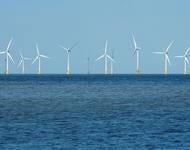Originally posted here.
The year 2023 has not been a good year for the offshore wind industry, which has seemingly been beset by adversity on all sides.
Supply chain disruptions, largely resulting from the COVID pandemic and national efforts to deal with the pandemic, have resulted in material and equipment unavailability and/or delivery delays. Inflation has increased the cost of equipment and the cost of installation. Rising interest rates have increased project financing costs. All of these factors have combined to delay projects and increase the delivered cost of the electricity to be produced by the projects.
Several project developers have cancelled projects or sought to renegotiate existing contracts for both existing and proposed projects. Others are threatening to walk away from project negotiations unless substantially increased subsidies are made available for the projects. While increased subsidies can reduce the delivered cost of the output of the projects to their customers, they do not reduce the societal cost of the project output and might arguably increase the societal cost.
In addition to the issues facing proposed projects, the industry is also dealing with major cost issues associated with existing projects. Several manufacturers and project developers have experienced higher than projected maintenance and repair requirements. This issue is more significant with offshore wind because of the higher cost of performing maintenance and repair work on the high seas.
These issues have been compounded by the rush to increase the capacity of offshore wind turbines. These larger wind turbines have been plagued with rapid gear box wear and blade failures resulting from vibration of the rotating components. These problems reflect inadequate design and insufficient testing prior to commercial installation of the much larger wind turbines. The typical onshore wind turbine has a capacity of approximately 3 MW, while the newer offshore wind turbines have capacities of up to 15 MW. These large wind turbines have blades approximately 380 feet long, which must be able to flex along their length as wind conditions change.
Increased maintenance and repair costs in existing large wind turbine projects has caused 2+ billion dollar financial losses for several wind turbine manufacturers, including Oersted, General Electric and Siemens Gamesa. Others, including Vestas and Iberdrola, have also experienced losses due to increased maintenance and repair costs. It is likely that such losses will increase until the affected components are replaced with improved versions.
Some offshore wind turbines in Northern Europe have been damaged by gusting high winds. However, these winds are far less potentially damaging than the winds generated by hurricanes off the East Coast of the United States. There is no experience with these large offshore wind turbines in a category 4 or 5 hurricane such as hurricane Lee, which moved up off the coast until finally making landfall in Maine and Nova Scotia.
There is also no experience regarding the cost of insuring these large capacity wind turbines in an area prone to hurricane exposure.
Finally, there remain serious questions regarding the effect of these large wind turbine projects on marine life, particularly the endangered Right Whales which migrate up and down the US East Coast.


